Cultural Tours to Omo Valley Tribes of Ethiopia

The southern part of Ethiopia is known as the Mosaic of Culture due to the fact that different ethnic groups are found at relatively small distances. As much as they have their own livelihood peculiar to their area, they also have common cultural elements they share. On this tour, you will be able to discover some of the many tribes living in the Omo Valley of the Great Ethiopian Rift Valley namely Sidama, Dorze, Gamo, Konso, Benna, Tsemay, Mursi, Hamer, Kara, Dasenech, Derashe and more. Of these, the Konso landscape is registered as World Heritage Site by UNESCO and the Konsos are even awarded by FAO for keeping the environment friendly by manual terracing farming.
Note: Please be informed that the above tour can be tailored as per your time, and interest.
Gallery
Itinerary
Day 1
Arrival and City tour of Addis.Addis Abeba is a city that is very young as compared to the country which has a history dating back over 3000 years. In Amharic, one of the Federal languages of Ethiopia, Addis Ababa means "New Flower".
Founded in 1886 by Menelik II, Addis Ababa is located at 2500m (8,202 ft.) above sea level. Addis Ababa is also the seat of the African Union (AU) which used to be called the Organization for African Unity (OAU) since the 1960s and many other international organizations and over 100 Embassies. It enjoys an excellent climate all year round; with an average temperature of 160C. Addis Ababa is a pleasant city with wide avenues of Jacarandas, interesting museums, and one of the biggest open-air markets in Africa, known as Mercato. After having rest in the morning, you will have a half-day city tour which includes the following:
National Museum: - which comprises many archaeological and historical findings including the famous complete hominid fossil remaining of `Lucy` locally known as Dinknesh meaning wonderful. Visiting this museum means having a good summary of your visit to historic Ethiopia.
OR
Trinity Cathedral: - a beautiful church with a baroque style of European architecture, which is unique to both Ethiopia and Africa and is dedicated to the Holly Trinity. Here you will find scripts of the imperial families, statues done by a Greek sculpture, Stained glass window paintings from the Old and New Testament in the Bible, and coffins of Emperor Haile Selassie-I; the founder of the church, and his wife.
AND
Merkato: - It is the largest open-air market in Africa. Here you will be presented with a confusing, but fascinating, a glimpse of the vast range of goods and artifacts available from all parts of the country and you will enjoy the Ethiopian trade exchange tradition in the open air.
You will also pass by historical monuments that have great historical significance. Overnight Jupiter Hotel or similar.
Day 2
Addis to Arbaminch via Adadi Maryam Rock Hewn Church (460 kms)Depart early morning to Arbaminch. Along the way, you will see different traditional houses of the Gurage, and Hadya tribes. You will also visit the Tiya Stele field at Tiya town from the 12th C. which is one of the world heritage sites registered by UNESCO. Passing through different scenic views of Lake Abaya - the biggest rift valley lake. Arrive late in the afternoon at the comfortable hotel with a great view of the two Rift Valley Lakes Chamo and Abaya, and the Nech Sar National Park. Overnight Paradise Lodge or similar.
Day 3
Boat trip on Lake Chamo and Excursion to Dorze Village. (90 Kms)In the morning drive to Lake Chamo for a short boat ride to see the crocodiles, Hippos, and different bird species, among them African Fish Eagle, Grey Headed Heron, Saddle Billed Stork, Pelicans, and Marabu Storks are some of them. You will also see the local fishermen fishing on the lake with their traditional wooden boats.
In the afternoon, drive to Dorze Village on the Guge Mountain chain with a magnificent breathtaking view of the Great Rift Valley lakes Abaya and Chamo. The area gets rain two-third of the year. The igloo-shaped traditional houses are built from bamboo and have the face of an elephant. Locals have it that the design is in such a way for the memory of the elephants that used to live in the area many years ago and fled because of hunting.
At one of the local households, visit their way of living. Every household has a green backyard where the Dorze are known for two things – The false banana tradition and cotton weaving. Here you will see and attempt to spin cotton and bake the ‘KOCHO’ – a thick bread-like product of the stem of a false banana. You will also enjoy the whole process of fermentation of the false banana and related activities thereby understanding how their life is tied to this plant. You will end up your visit with a traditional dancing of the Dorze which you will be invited to take part in and be one of them. Upon departure, you may enjoy the different styles of colorful scarves the locals sell and have a moment to decide which one to take home for souvenirs to friends and/or relatives or yourselves. Overnight Paradise Lodge or similar.
Day 4
Arbaminch to Jinka. (230 kms)Drive to Konso, enjoying the view of the southern and last two rift valley lakes – Abaya and Chamo. The Konsos are hardworking people and are known for their terracing farming and using small plots of land for different edible plants. For this, they are awarded by FAO for keeping the ecosystem friendly through manual farming. Here you will visit a village called Gamole which is a maze to walk inside. You will visit the unique style of their traditional houses and the elements in the compound, the community houses where the youth sleeps and reaches out to the villagers in case of an emergency, a generation pole where you find poles tied together which also allows you to understand how old the village is by counting the number of poles and multiply them by 18 which is believed to be one generation age and a pole is erected and tied with the other existing ones every 18 years.
Proceeding the drive to Jinka with different photo stops for the view of the Omo Valley, we will arrive at Jinka late afternoon. Overnight Eco-Omo Lodge or Similar.
Day 5
Mursi Village and drive to Turmi. (255 kms)Excursion to the Village of the Mursi tribes who are pastoralists and are known for the lip plates they wear on their lower lip. They use it as a sign of beauty. The bigger plate a girl has the higher number of cows her parents will receive up on her marriage. They are also known for the game of stick fighting locally known as 'Sagine' whereas the long stick (nearly 2 meters sometimes a bit more) they use for the game is called 'Donga'. You will visit their village and their way of living and proceed to Turmi after having lunch. Overnight Buska Lodge or Similar.
Day 6
Excursion to Kara and Nyangatom tribes. (170 kms)Excursion to Korcho - village of the Kara people who are master of body painting and lives on the hill overlooking the Omo River. You might pass countless sheeps and goats along the way. Once you arrive to the village, you will be amazed by the beautiful view of the Omo river and how it travels crossing different villages of Omo Valley tribes till it enters Lake Turkana in Kenya.
The next village is Nyangatom tribe, approximately 40 km drive from Korcho village. The Nyangatoms are known for their colorful beads decoration on their neck.
If the date happened to be on a market day at Turmi (Saturday) or Dimeka (Tuesday), we will visit the market. In addition, if luck is on our side, we may be able to see the Bull Jumping ceremony of the Hamer tribe by a young initiate to pass to the manhood where you may experience the very colorful dancing and singing of the women to show their support to the initiate. Overnight buska lodge or similar.
Day 7
Drive Turmi to Arbaminch via Elbore Village (250 Kms)Leaving Turmi behind, drive to the Elbore tribe whose language (Oromiffa) is grouped Cushitic. Though they have a unique culture, they are governed under the Gada System like all other Oromo ethnic groups. Their way of house construction and the way they lead their life is worth experiencing in the village.
Arrive at Arbaminch in the afternoon and overnight at Paradise lodge or similar.
Day 8
Arbaminch to Hawassa. (280 kms)Departing early morning from Arbaminch, drive to Hawassa passing through different cities - Wolayta Sodo, Boditi, Shone, Halaba Kulito. En route, have a short visit to Senkele Animal Sanctuary to see the endemic and once-endangered species of Swayne's hartbeest. (This visit will be done provided that the road condition to the sanctuary is good and time allows).
Arrive in Hawassa in the late afternoon for an overnight at Haile Resort Hotel or similar.
Day 9
Visit Fish Market and Drive to LanganoEarly morning, visit the local fish market at the shore of Lake Hawassa where the locals perform their daily routine by fishing, and selling fish, and the children feed the aquatic birds such as Marabu stork, Hamercob, and more. Walk in the park where you can see the Colobus Monkey and many vervet monkeys, and more bird species such as Silver Cheeked Hornbill, Egyptian Goose, Cormorants, and African Darters. Then proceed the drive to Langano visiting Abjata-Shalla National Park for Ostriches, Thomson Gazelles, and Warthogs en route. Overnight Sabana Beach Resort.
Day 10
Langano - Addis via Tiya Stelae (220 kms)After breakfast in the morning, refresh yourselves at the shore of Lake Langano, a tea color lake, which is the only swimmable one in the Rift Valley. Then we drive to Addis via Tiya - one of the prehistoric world heritage sites registered by UNESCO. Arrive in Addis in the late afternoon.
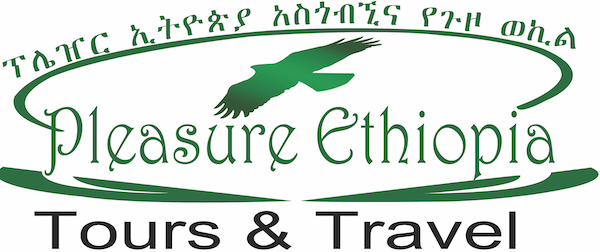






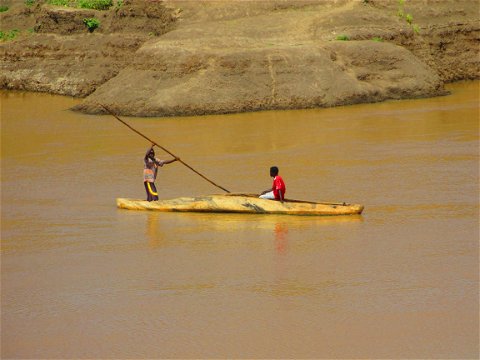
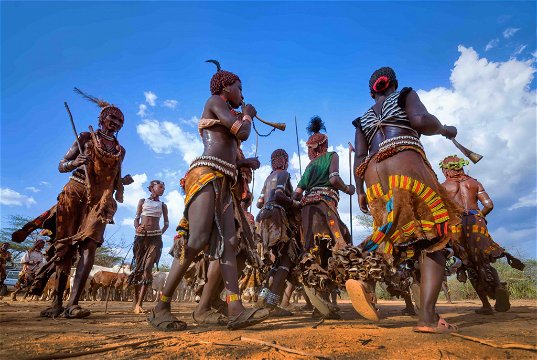
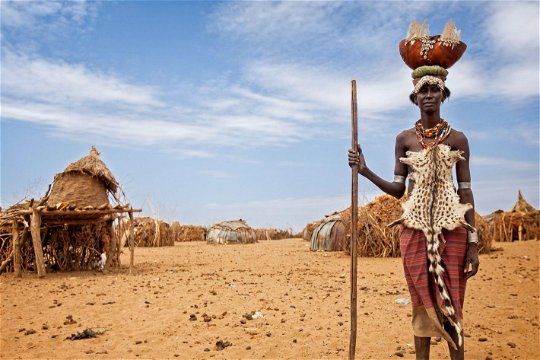
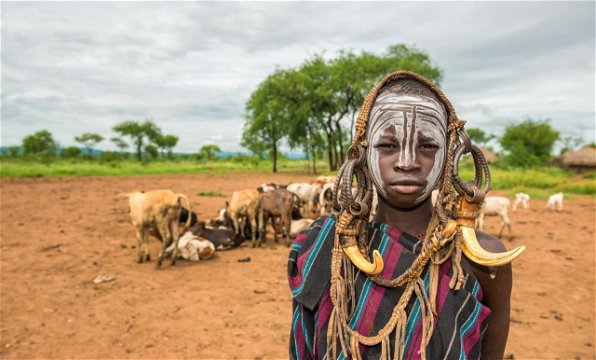
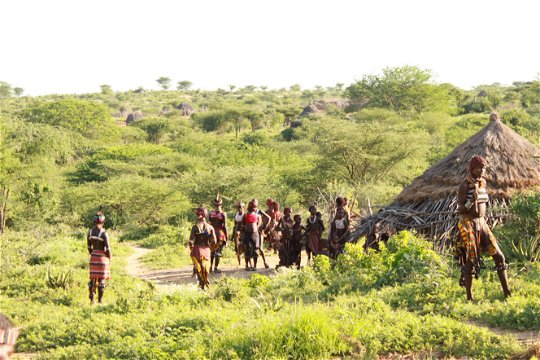
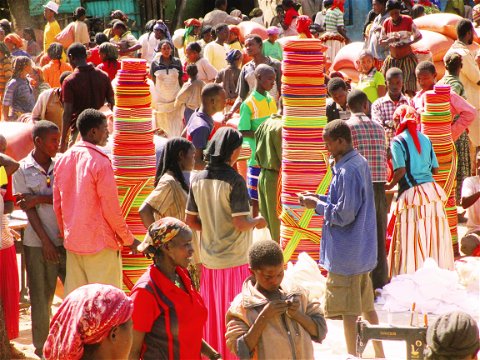
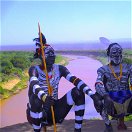
Share This Page